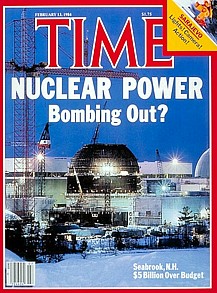 after
Three Mile Island.
OK, plus a state Supreme Court ruling, but that would be easier in Georgia
since the New Hampshire Supreme Court already set a precedent of upholding
the NH law.
After Fukushima,
Georgia could ban CWIP and end the new Plant Vogtle construction.
The we could
get on with building solar.
after
Three Mile Island.
OK, plus a state Supreme Court ruling, but that would be easier in Georgia
since the New Hampshire Supreme Court already set a precedent of upholding
the NH law.
After Fukushima,
Georgia could ban CWIP and end the new Plant Vogtle construction.
The we could
get on with building solar.
Here’s the text of the NH law, taken from the NH Supreme Court ruling:
“378:30-a Public Utility Rate Base; Exclusions. Public utility rates or charges shall not in any manner be based on the cost of construction work in progress. At no time shall any rates or charges be based upon any costs associated with construction work if said construction work is not completed. All costs of construction work in progress, including, but not limited to, any costs associated with constructing, owning, maintaining or financing construction work in progress, shall not be included in a utility’s rate base nor be allowed as an expense for rate making purposes until, and not before, said construction project is actually providing service to consumers.”Simple enough. The Georgia legislature could do it. Knowing the NH CWIP ban caused PSNH to go bankrupt on costs for the Seabrook nuclear plant, Georgia Power might back off on Plant Vogtle rather than have such a law passed.
-jsq


